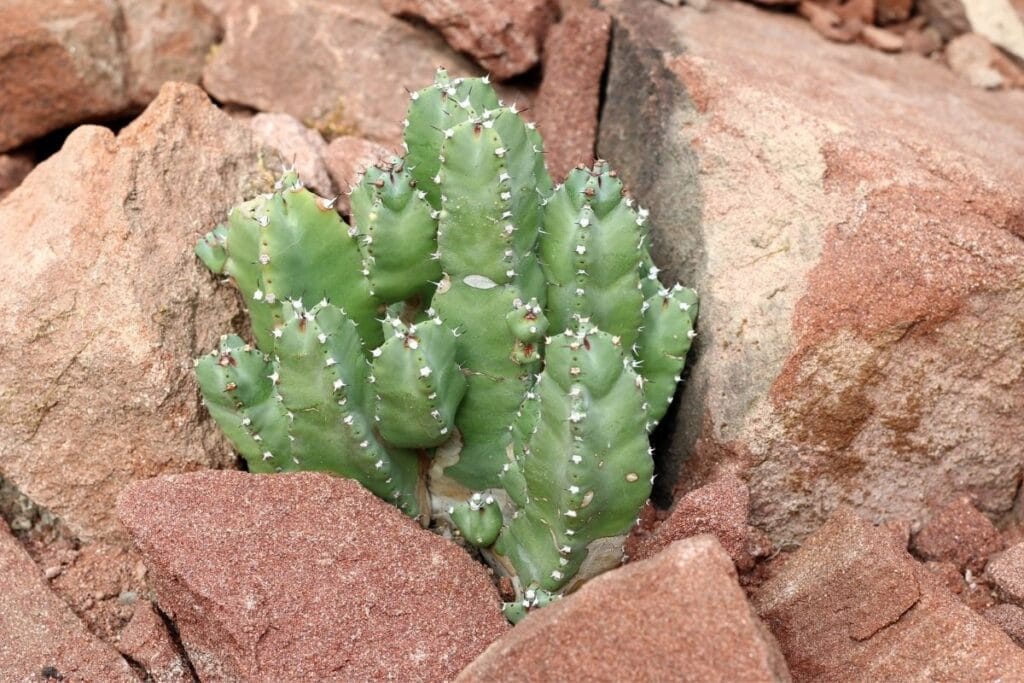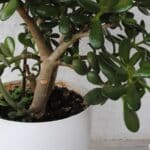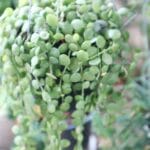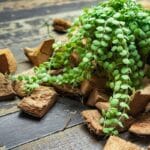Are you curious about how to grow Euphorbia resinifera – aka Moroccan mound succulents – aka Afrian spurge – aka the resin spurge?
With its easy-to-care-for nature and fast-growing habit, this attractive mounding succulent is sure to spruce up any indoor and garden scene. These plants are the perfect specimens as textural accents in xeriscapes or as container plants for your home.
Looking to add Euphorbia resinifera to your collection? Read on to find more about the beautiful resin spurge plant and how to care for it.
What is a Moroccan Mound Spurge?
Euphorbia resinifera, also known as Moroccan mound spurge or resin spurge, is a low-growing succulent native to Morocco where it naturally grows in the slopes of the Atlas Mountains (1). So the name African spurge makes a lot of sense!
The genus Euphorbia was named after Euphorbus, the physician of King Juba II of Namibia while the species name resinifera was coined in reference to the active compound found in its latex (2). These are some of the oldest documented medicinal plants and can be used in all seasons, from early spring to early summer and even into late winter.
The resin spurge plant has a long history of cultivation. Like all members of the family Euphorbiaceae, the Moroccan mound contains a milky white sap called latex. Resin spurge forms a high concentration of this sap, which can cause skin irritation.
The dried latex of the Morrocan mound, known as Euphorbium, was used in ancient medicine. Later, it was found to contain resiniferatoxin, a compound tested to have analgesic properties (2,3).
A succulent shrub, the resin spurge plant grows up to only 60 cm tall. Despite its small size, it is a prolific sucker and readily forms dense, multi-stemmed mounds about 2 meters in diameter. It is generally leafless and has an outward growth habit, forming a cushion shaped clump of growth from stem cuttings.
The stem segments on Euphorbia resinifera are blue-green to lime green in color with four sides and along the corners are pairs of short brown spikes, giving the resin spurge branches a look similar to a cactus. In late winter to early spring, the resin spurge plant produces small, yellow inflorescences called cyathia (4).
How to Care for Moroccan Mound Cactus
Moroccan mound cacti are one of the most easy-to-care-for succulents. They can thrive even with minimal care. But if you want your resin spurge to have the best growth, here are some caring tips for these care-free succulents.
Before we dive into the care guide for your resin spurge, note that resin euphorbia emits a milky sap that is known to produce burning pain when you encounter it.
It has a high concentration of toxins that are known to cause paralytic weakness – so be sure to wear gloves when handling the plant. It’s not debilitating, but it’s an effect similar to what you get when cutting hot peppers. Avoid it if you can!
How Much Light Does Moroccan Cactus Need?
Resin spurge plants are not very particular with their lighting needs. They do well in partial shade, but the most compact growth is achieved in a bright and sunny position. Full sun is ideal.
You can grow them outside or as potted houseplants. Because it’s native to Morocco, resin euphorbia will perform best in warm weather and bright sun. However, because it’s from the slopes of the Atlas Mountains, it probably doesn’t need quite as much sun or heat as you think, particularly in comparison to other succulents or even other euphorbia species.
Often, it can get by with partial shade.
As a rule of thumb for most houseplants, allow your resin spurge plants to get at least 6 hours of full sun to get the brightest colors (4,5). Full sun encourages photosynthesis and healthy functioning, particularly in fall to late winter.
How Often Should You Water Resin Spurge Plants?
Resin spurge require very little watering and don’t need supplemental water often.
As with other succulents, they tend to develop rot with too much moisture. Allow the soil to dry up before the next watering. Additional watering is only needed during the hottest months of summer (4).
What is the Optimum Temperature and Humidity for Resin Spurge Plants?
Resin spurge plants have the best growth in average temperatures with low to average humidity. They are also heat and cold tolerant and can endure winter lows reaching down to 20oF (-6.7 °C) (4,5).
Resin spurge branches profusely spread, forming multi stemmed cushion shaped formations. This dense succulent shrub is known for growing outward rather than up.
What is the Best Potting or Growing Media for Resin Spurge Plants?
These Euphorbia resinifera plants are not picky when it comes to soil. They can grow in alkaline and saline soils. But remember that these plants are prone to rot with excess moisture so make sure that the potting media has that extra drainage (4).
Because they easily rot, try to use a well draining potting mix like sand or cactus mix. This will prevent root rot and keep your plant healthy without requiring too much additional water.
How Do You Propagate Resin Spurge Plants?
Because of their prolific growth, moroccan mound succulents are very easy to propagate. You can do this by planting one seed in fresh potting soil in early spring, but it’s far easier to take stem cuttings.
Propagation can be done by cutting an offset using short but sharp pairs of scissors, washing the latex off, and allowing it to dry for a few days. Try to take four angled stem cuttings to give yourself the best success rates.
You’ll place your unsealed cuttings in an undisturbed location. These stem cuttings will naturally reheal themselves and then have the ability to grow roots.
Once the cut wound has healed and formed a callus, you can plant your Euphorbia resinifera cutting in a separate pot (4).
Are Resin Spurge Plants Toxic?
As with all members of Euphorbiaceae, Moroccan mound cactus produces a toxic thick white milky white sap. The sap from Euphorbia resinifera, although having medicinal properties, is also an irritant, particularly dangerous to the skin, eyes, and mucous membranes.
Ingestion of any part of the resin spurge plant can cause nausea, vomiting, and diarrhea, while skin contact with the sap can cause redness, swelling, and blisters. It is important to wear gloves and pay extra care when handling your resin spurge plants (6).
For more cacti to grow, check out these cactus varieties.
References
Reference List:
(1) ‘Name Search: Euphorbia resinifera O. Berg.’ Tropicos.org. Missouri Botanical Garden. 2021. (online) http://www.tropicos.org/Name/12806689.
(2) Quattrocchi U. ‘CRC World Dictionary of Medicinal and Poisonous Plants: Common Name, Scientific Names, Eponyms, Synonyms, and Etymology (5 Volume Set)’. CRC Press. 2016. P 1693.
(3) Appendino G., Szallasi A. ‘Euphorbium: Modern Research on its active principle, resiniferatoxin, revives and ancient medicine’. Life Sciences 60(10). 1997. PP 681-696.
(4)‘Euphorbia resinifera’. NC State Extension. 2021. (online) https://plants.ces.ncsu.edu/plants/euphorbia-resinifera/.
(5) ‘Plant Highlight: Euphorbia resinifera’. The Ruth Bancroft Garden, Inc. 2015. (online) https://www.ruthbancroftgarden.org/plants/euphorbia-resinifera/.
(6) Boericke W. ‘New Manual of Homeopathic Materia Medica and Repertory’. B. Jain Publishers. 2001. P. 272.
Close
*image by siloto/depositphotos







